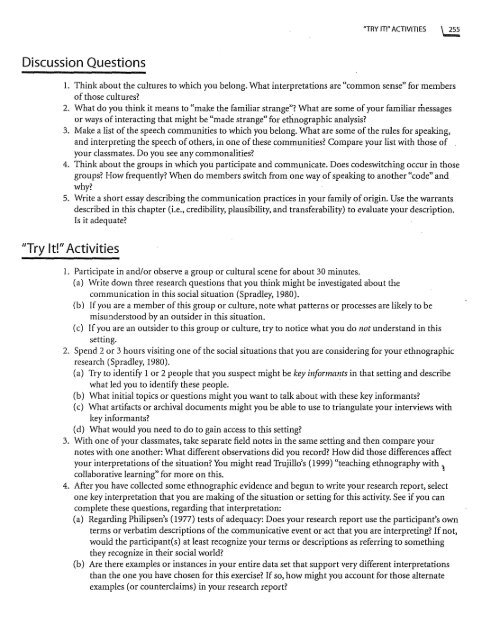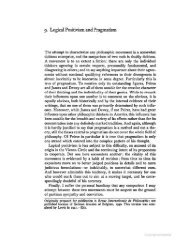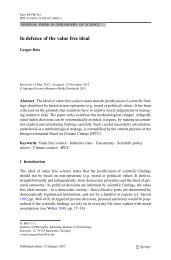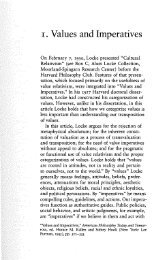Ethnographic Research - Matthew J. Brown
Ethnographic Research - Matthew J. Brown
Ethnographic Research - Matthew J. Brown
- No tags were found...
Create successful ePaper yourself
Turn your PDF publications into a flip-book with our unique Google optimized e-Paper software.
"TRY IT!" ACTIVITIES \ 255Discussion Questions1. Think about the cultures to which you belong. What interpretations are "common sense" for membersof those cultures?2. What do you think it means to "make the familiar strange"? What are some of your familiar messagesor ways of interacting that might be "made strange" for ethnographic analysis?3. Make a list of the speech communities to which you belong. What are some of the rules for speaking,and interpreting the speech of others, in one of these communities? Compare your list with those ofyour classmates. Do you see any commonalities?4. Think about the groups in which you participate and communicate. Does codeswitching occur in thosegroups? How frequently? When do members switch from one way of speaking to another "code" andwhy?5. Write a short essay describing the communication practices in your family of origin. Use the warrantsdescribed in this chapter (i.e., credibility, plausibility, and transferability) to evaluate your description.Is it adequate?"Try It!" Activities1. Participate in and/or observe a group or cultural scene for about 30 minutes.(a) Write down three research questions that you think might be investigated about thecommunication in this social situation (Spradley, 1980).(b) If you are a member of this group or culture, note what patterns or processes are likely to bemisu:1derstood by an outsider in this situation.(c) If you are an outsider to this group or culture, try to notice what you do not understand in thissetting.2. Spend 2 or 3 hours visiting one of the social situations that you are considering for your ethnographicresearch (Spradley, 1980).(a) Try to identify 1 or 2 people that you suspect might be key informants in that setting and describewhat led you to identify these people.(b) What initial topics or questions might you want to talk about with these key informants?(c) What artifacts or archival documents might you be able to use to triangulate your interviews withkey informants?(d) What would you need to do to gain access to this setting?3. With one of your classmates, take separate field notes in the same setting and then compare yournotes with one another: What different observations did you record? How did those differences affectyour interpretations of the situation? You might read Trujillo's (1999) "teaching ethnography with ~collaborative learning" for more on this. .4. After you have collected some ethnographic evidence and begun to write your research report, selectone key interpretation that you are making of the situation or setting for this activity. See if you cancomplete these questions, regarding that interpretation:(a) Regarding Philipsen's (1977) tests of adequacy: Does your research report use the participant's ownterms or verbatim descriptions of the communicative event or act that you are interpreting? If not,would the participant(s) at least recognize your terms or descriptions as referring to somethingthey recognize in their social world?(b) Are there examples or instances in your entire data set that support very different interpretationsthan the one you have chosen for this exercise? If so, how might you account for those alternateexamples (or counterclaims) in your research report?






